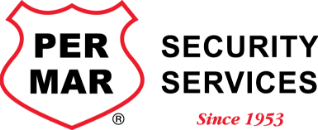Is Your Fire Safety Equipment Up-To-Date & Up-To-Code?
October 16, 2018
Running a business has you going in many different directions. Not only is your to-do list never-ending but some tasks simply aren’t ingrained in your day-to-day operations because they only need attention once or twice per year. Your fire safety equipment falls into that category.
As a refresher, keep in mind that the National Fire Protection Association (NFPA) creates strict guidelines not only for the installation of your fire alarm system but also for its maintenance and performance. Your local fire code is established by the Authority Having Jurisdiction (AHJ) which you can find by contacting your local fire marshal.
This blog is designed to help you understand the importance of having up-to-date and up-to-code fire safety equipment as well as creating a schedule around your fire safety testing and inspections. Not only that, we hope you walk away with the peace of mind that you are following established fire safety standards for your district and that your fire alarm system is operating efficiently.
But first…
Which equipment is inspected and/or tested?
- Fire alarms
- Portable fire extinguishers
- Commercial range hoods
- Sprinkler systems
Naturally, we’d like to see all businesses get on a schedule for testing the above systems so that these items never get lost in the shuffle. Sometimes, understanding the why behind a process helps toward completion, so…
Why do we recommend testing your fire alarm and suppression systems?
- Faulty equipment can put lives at stake. This will always be our number one focus!
- To provide a safer work environment.
- Impairments may not be obvious without testing and your equipment will only operate properly if it’s well-maintained.
- To meet the requirements of your local building department, fire inspectors and even your insurance carrier.
- Your insurance carrier may reject your claim if you do not have proof of completed scheduled inspections.
- To minimize faulty alarms that waste fire department resources. This could put others’ lives in jeopardy and many jurisdictions will charge the building owner for multiple nuisance alarms.
- It is required by the National Fire Alarm Code (NFPA 72, NFPA 10, NFPA 25, NFPA 17). In other words, IT’S THE LAW!
Faulty fire alarms and equipment are nothing to take chances on! When properly installed, maintained, tested, and serviced, your fire alarm system will run optimally. We hope this list helps you prioritize and schedule these very important tasks into your business’s safety regimen. For more directions or to schedule your fire safety inspection contacts us today.
 Careers
Careers Customer Support
Customer Support (800) 473-7627
(800) 473-7627 Contact Us
Contact Us Locations
Locations